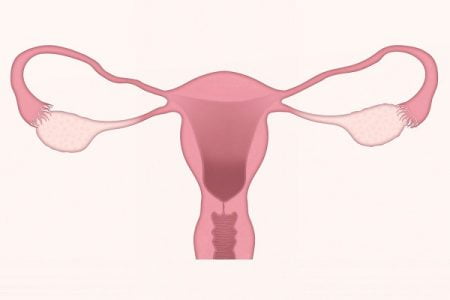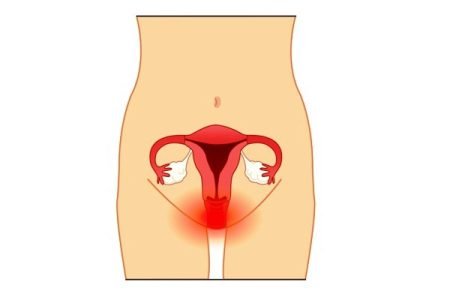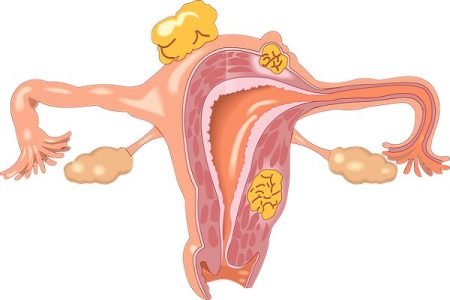Treatment Options for Uterine Cancer
- Updated on: Jul 8, 2024
- 6 min Read
- Published on Nov 6, 2020

Introduction
A multidisciplinary team including various specialists like oncology nurses, gynecologic oncologists, pharmacists, counselors, radiologists, pathologists, and dieticians together decide the type of treatment required for uterine cancer depending upon the stage and condition of cancer. The patient’s health, age, personal choice, and ability to be fertile after treatment are factors that also affect the healthcare team’s decision about the treatment options.
Treatment Options for Uterine Cancer
Surgery
There are different surgical processes that a patient can undergo to treat his/her uterine cancer. Some of the surgical procedures are listed below:
Hysterectomy
For stage 1, cancer of uterus/womb, hysterectomy is performed. In this surgery, the uterus, along with fallopian tubes and both the ovaries, are excised. This is known as bilateral salpingo-oophorectomy; this is majorly performed in the woman who has attained the stage of menopause. Hysterectomy can also be simple and radical. The uterus and cervix are excised from the body in the case of simple hysterectomy.
At stage 2 and 3 of uterine cancer, cancer spreads in the whole uterus and surrounding lymph nodes. This requires total or radical hysterectomy. The uterus, cervix, upper parts of the vagina, and nearby tissues are cut out.
In the case of stage 4 uterine cancer, a debulking surgery is preferred. This is done to remove as much cancer as possible. This doesn’t treat uterine cancer but provides little ease to the patients and uterine cancer symptoms.
Lymphadenectomy
This procedure is done when the tumor spreads to body other than uterus. In this surgical process, the lymph nodes around the tumor are removed.
Omentectomy
In this surgical process, fatty tissues are eliminated from the body. This is usually done in the case of serum producing carcinomas.
Laparatomy
This surgery is performed on the abdomen. An extended cut is made from the belly button to the pubic area. After opening the abdomen area, the area is washed with the fluids. Then the affected areas like the uterus, fallopian tube, and cervix are removed. Sometimes vaginal walls supporting the cervix and ligaments are also removed.
Read More About Uterine Cancer
Methods of Surgeries
Keyhole Surgery
It is also known as laparoscopic surgery. Small cuts are made on the skin, and the surgical instrument is inserted through these cuts. The instrument consists of a telescopic lens, a thin rod, a camera, and a light source. This instrument magnifies the insight of the body and enables the surgeon to view the screen, and eases the process of surgery. Keyhole surgery leads to very little scarring and less blood loss. General anesthesia is given to the patient before performing this surgical process. Carbon dioxide and sometimes nitrous oxide are inserted through one of the incisions; this helps the doctors have a clear view and boosts the abdomen.
Robotic Surgery
In this type of surgery, a robotic machine having four arms is used. One arm is used to hold the camera, and the other arms are used to hold the instrument. A machine is used to manage and control the movement of the robot’s arms to perform the surgery. This type of surgery is also known as assisted robotic surgery or da Vinci Surgery.
After the Surgery Process
It depends on the type of surgery the patient has undergone. The patient is monitored for four to five days in the ward before getting released from the hospital. The duration of the stay depends on the type of surgery performed. Pain killers or local anesthesia is given for a day or two to lower the feeling of pain. A little vaginal bleeding may also occur, but it usually stops within a week or two.
A compression stocking is also provided to the patient, and she has to wear it all the time for two to three weeks for easing the blood circulation in the legs. Blood thinner is also injected daily to prevent and manage the risk of blood clots.
Read More About the Survival Rate of Uterine Cancer
Chemotherapy
Chemotherapy is generally given at stages 3 and 4 of uterine cancer. It is given intravenously mostly. Patients can go back to their home the same day of treatment, but sometimes they might need to stay in the hospital for a few days. Chemotherapy is usually given after surgery, and it prevents the risk of resurfacing of cancer, but in advance cases of cancer, it is given to slow down the process of spreading cancer in the other parts of the body, known as malignancy.
The chemotherapy for womb cancer is usually given as in the combination of drugs. The most common chemotherapy drugs are mentioned below:
Paclitaxel
It is commonly known as Taxol. It helps in the treatment by blocking the growth of the cancerous cell; it does not let cancerous cells divide into two cancer cells or further. The chemotherapy cycle of this drug takes 1 hour, 3 hours, or 24 hours. This drug is administered intravenously.
Cisplatin
Cisplatin helps in the treatment of drugs by killing rapidly dividing cells. It is also administered via drip in the bloodstreams.
Doxorubicin
It is commonly known as anthracycline. It prevents the growth of cancerous cells by blocking the activity of an enzyme called topoisomerase 2. This enzyme topoisomerase 2 is very important for the cells to divide and grow. It is given in combination with other drugs for chemotherapy.
Central Lines
When a patient undergoes many cycles of chemotherapy, the veins become black and very thin because of chemotherapy drugs. Then at a point, it gets very difficult for the doctors to find a healthy vein, and then they suggest the patient have a central line. It is connected to the central blood vessel near the heart. It is long flexible plastic tube that can remain attached to the body even after a session of chemotherapy. The same central line can be used again and again for the next chemotherapy cycles.
Central lines can be of different types. The acute central line is done when the treatment runs for a short period of time. It goes in through the vein in the neck. Another type of central line goes to the chest through the skin via collar bone. Other central lines are portacaths and PICC lines.
Prior to the insertion of the central lines, local anesthesia is given, and sometimes continuous x – rays are also used for the insertion of central lines. It helps the doctor to visualize and assure that it is placed in the correct position.
It can stay there for months, and the patient can do his daily life activity without any hindrance as it is held by a small cuff under the skin, which holds it in the right position.
Chemotherapy has many side effects; it includes hair loss, infection in the bloodstream (known as sepsis), and the ability to fight infection also gets decreased. The good part is that the side effects fade away at the end of the treatment.
Check out our other Trusted Resources on the Types of Uterine Cancer
Radiotherapy
This treatment is done to slow down the process of spreading of cancer and to prevent the reoccurring of cancer. For the sessions of radiotherapy, the patient has to visit the hospital five days a week, and this continues for 4 – 5 weeks. Two types of radiotherapy used to treat womb cancer:
External Radiotherapy
High energy x – rays are used to kill the cancer cells. Usually, this treatment is given after surgery, but sometimes some women get this therapy as the main treatment. The machine for radiotherapy is very big, and it continuously rotates around the patient without touching her. During the whole process of the therapy, the patient is alone inside the radiation therapy room. Doctors and nurses are in the other room, but they can communicate with the patient and guide them with the instructions on how to be inside the radiotherapy machine.
Internal Radiotherapy
This is also known as brachytherapy; this means giving radiation from inside of the body. With the help of the applicators (hollow tube) radiation source is inserted inside the vagina. This supplies a very high dose of radiation on top of the vagina and a low dose to the surrounding tissues. Planning is a very important part of internal therapy. During this process, doctors examine and check for the size of the applicator that will be needed. An anesthetic gel is applied on top of the applicator before insertion; this prevents the pain but can be a little uneasy. With the help of the clamp which is attached to the bed, the applicator is held in the place.
During the treatment, the bachytherapy machine is connected with the applicator. The machine has a radioactive palette that leaves the machine and enters the applicator. This process takes about 10 – 15 minutes of time to be completed.
There are some side effects of radiation therapy that doctors discuss with the patients prior to the treatment. Side effects include diarrhea which affects the bowel movement, skin around the treatment area can become red and sore; hair loss is one of the major side effects.
Hormone Therapy:
The female hormone estrogen affects some of the cases of womb cancer. In hormone therapy, progesterone hormone, which is naturally being produced in the body, is replaced by the artificial hormone. The artificial progesterone is usually given in the form of tablets or injections. This therapy is usually given in stage 4 or advanced cases of cancer or when cancer has resurfaced. The common types of progesterone are:
- Medoxyprogesterone, commonly known as Povera
- Tamoxifen
- Letrozole, also known as Femara
- Megestrol acetate, commonly called as Megace
There are few side effects of this therapy like weight gain, nausea including muscle cramps,












